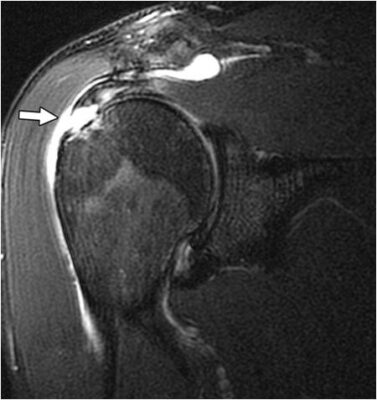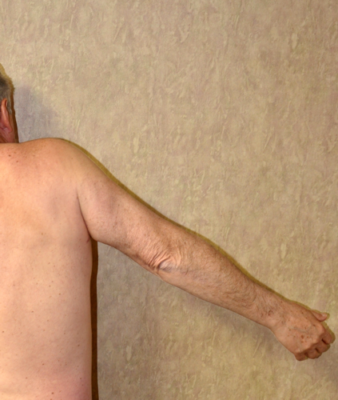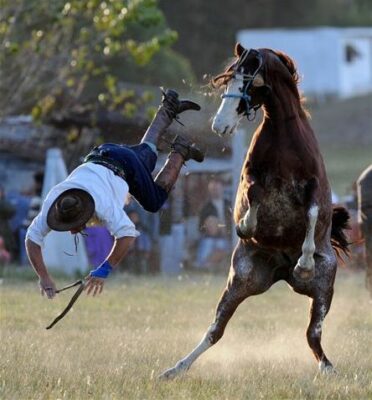How do I know if I have a tear?
As with many other conditions in the shoulder these are often misdiagnosed and people are told they have cuff tears without any evidence that they do.
Normally a tear would involve some event that happens suddenly such as a fall. In order to tear the tendons considerable force is needed. A tear cannot happen doing normal day to day activities or even doing sport.
Generally you know immediately that you have done something more serious.
An acute tear should not be confused with tendonitis. There is confusion because the same word is used to describe a chronic, or gradual erosion, through a tendon which eventually can cause a hole.
You may develop a hole in your tendon (called a full thickness tear) as you age. In fact about 10% of people aged 60 have an asymptomatic erosive tear i.e. a scan shows they have a hole in the tendon but they have no symptoms from it.
By the age of 80 nearly 50% of people have a rotator cuff that has rubbed through. This is called ‘intrinsic cuff disease’ and simply means that the tendon degenerates with age due to a poor blood supply.
And as 50% of 80 year olds do not have shoulder pain or weakness then we know that just having a hole in the tendon is not necessarily a cause of either pain or dysfunction.
The other confusion is that the MRI scan will often report that there is a tear when it often just means that there is a hole in the tendon caused by normal ageing “wear and tear”.


Investigations
MRI and indeed any form of investigation – has a significant false positive rate. That means it shows things that are not actually relevant or related to your history or a cause of your symptoms.
So just because something is seen on the scan does not mean that is your problem.
If the diagnosis is tendonitis and a small tear, which does not seem to causing too much problem then the specialist will probably suggest a decompression operation rather than a repair of the tendon.
If the tendon is torn, it cannot repair itself and reattach back onto the bone. This is because fluid from the joint gets between the two surfaces and stops them bonding and also the pulling force of the muscle attached to the tendon keeps tugging the end of the tendon away from the bone.
It is not known what exactly happens to erosive cuff tears but the reason the tendon has failed is because it is intrinsically poor quality due to having a very inadequate blood supply, so operating in this instance is just like sewing up a lace curtain!
Even if it was fixed back to the bone, this can not improve the quality of the tendon and the likelihood is that it will just rub through again.
Probably, left alone, it will slowly get better.
Remember that 50% figure for cuff tears in 80 year olds but 50% of 80 year olds do not have shoulder pain.
In these cases the decompression operation should be all that you need.
Full Tear
If you are unable to lift your hand over head height and need to use your other arm to get the arm up or are unable to hold anything heavy with your arm out straight it is likely you have a torn tendon.
This could be an acute tear from a fall or a chronic tear if it has crept up on you. So in this case, you would need a cuff repair.
The management of Rotator Cuff Tears is a controversial subject amongst surgeons some that want to operate and others that take a more conservative approach. It seems that more and more operate and perform a repair if there is a functional problem causing weakness and inability to raise the arm.
Generally an acute tear should be repaired and a chronic tear may not need repair but may be helped by an injection or a simple decompression.

